Don't wanna be here? Send us removal request.
Text
Vilified Victims
Thousands of individuals in the United States that are incarcerated in jails and prisons suffer from a mental illness. In the United States, prisons are the BIGGEST MENTAL HEALTH PROVIDER, except for the fact that they cannot adequately provide mental health services. Thousands of people are arrested and locked up because of their mental illness and they do not get the proper help with our current justice system.
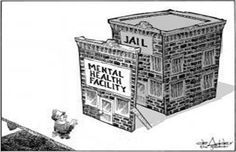
“PRISONS HAVE HIGHER RATES OF MENTALLY ILL OFFENDERS THAN JAILS, AND JAILS HAVE HIGHER RATES THAN THE NON-INCARCERATED COMMUNITY” (Diamond, Wang, Holzer III, Thomas, & Cruser)
The National Alliance on Mental Illness stated: “In a mental health crisis, people are more likely to encounter police than get medical help. As a result, 2 million people with mental illness are booked into jails each year. Nearly 15% of men and 30% of women booked into jails have a serious mental health condition.”
The majority are not violent, they just need the right help.
America’s jails have become our new mental hospitals (More Mentally Ill Persons Are in Jails and Prisons Than Hospitals: A Survey of the States)
in the United States there are now more than three times more seriously mentally ill persons in jails and prisons than in hospitals
in North Dakota there are approximately an equal number of mentally ill persons in jails and prisons compared to hospitals
Arizona and Nevada have almost ten times more mentally ill persons in jails and prisons than in hospitals
16 percent of inmates in jails and prisons have a serious mental illness (this has tripled since 1983)
40 percent of individuals with serious mental illnesses have been in jail or prison at some time in their lives
the odds of a seriously mentally ill person being in jail or prison compared to in a hospital across every U.S. state is 3.2 to 1
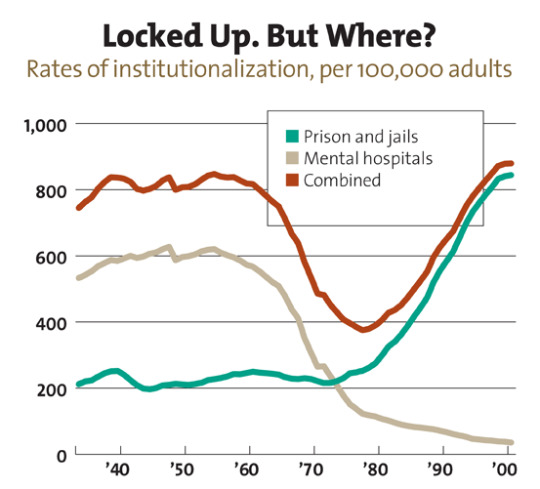
What happens to mentally ill persons behind bars?
Solitary Confinement
Solitary confinement in prisons is relied on more heavily today than ever before. The majority of inmates that must undergo solitary confinement are mentally ill. Putting someone who already suffers from mental illness in these types of conditions exacerbates their symptoms. Inmates in solitary confinement are limited in the resources they receive; this includes inmates with mental illness. For example, someone with mental illness in solitary confinement may not receive their medicine as they would if they were not confined.
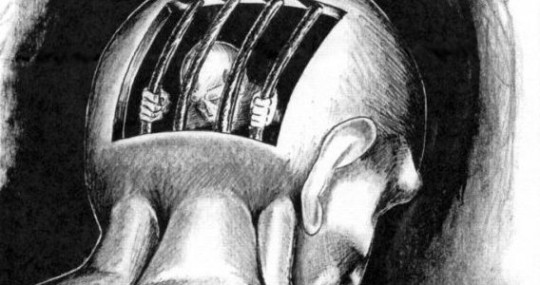
Kalief Browder
Kalief was from the Bronx in New York City. When he was sixteen years old he was wrongfully accused of theft. He spent three years at Rikers Island, New York City’s four-hundred-acre jail complex, awaiting trial. Two of those three years were spent in solitary confinement. While in prison, he was continuously beaten my inmates and guards. He was finally released when prosecutors dismissed the charges against him. However, what he had experienced in prison would follow him home. After that, Kalief was never the same, he experienced multiple signs of mental illness and tried on multiple different occasions to kill himself. Two years after his release, he did just that.
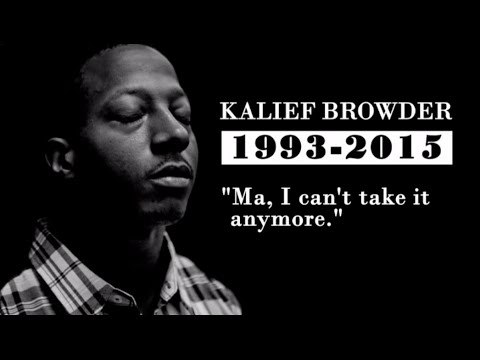
Since then, there has been legislation passed in New York on behalf of Kalief, limiting solitary confinement to teens and controlling the amount of time accused persons spend in jail awaiting trial.
But imagine, if solitary confinement and dangerous prison conditions can drive a perfectly healthy young man to kill himself, think of those persons who already have a mental illness and are exposed to the same conditions.
THE STIGMA
There is no surprise that there is a major stigma behind mental illness. People judge those with mental illness and stereotype them as unstable, aggressive, and scary. In an article, Karli Slomka gave an explanation. She stated that people fear mental illness because they are not familiar with it. People fear the unknown.
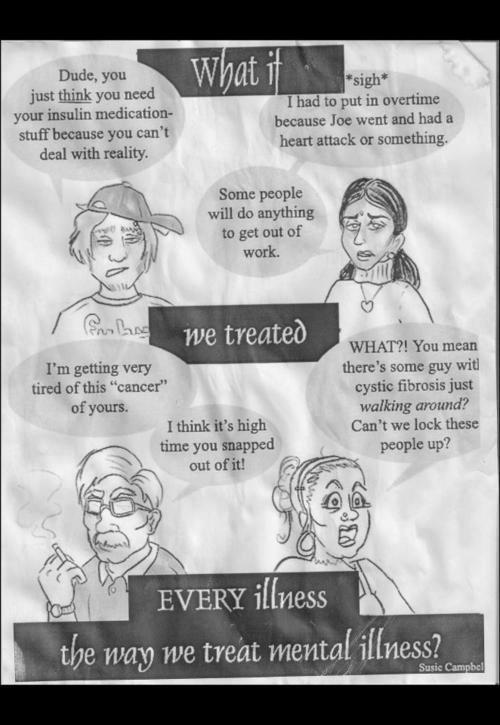
The Media
The media is no help in fighting this stigma, if anything they make it worse. The media feeds on the fear of their audience. If something is scary, it makes it more appealing, thus increasing viewers or readers.

For those who are not familiar with mental illness, seeing headlines like the ones above could very much sway their opinion of individuals who suffer from it.
Here are some statistics:
an estimated 1,000 homicides out of 15,000 every year are committed by those suffering from mental illness- this is not a lot
mentally ill people are 16 times more likely to be killed by police
those suffering from mental illness are also 2.7 times more likely to be the victims of crime, including sexual assault, robbery, and attacks
49 percent of autistic people have reported being sexually assaulted by those close to them
75 percent of autistic students report having been bullied in school due to their neurological disorder
in the first six months of the year 6.4 sexual assault victims faced intellectual disability
Mentally ill people are capable of committing a crime but they are also far more likely to be victims of a crime, including police brutality
How can this change?
Prisons are not the answer
Not only do prisons and jails lack the proper resources to house inmates that are mentally ill, they also resort to extremes to control them. Prisons can far worsen a person’s mental health condition and as we saw with Kalief, the conditions within a prison can even elicit mental illnesses.
But things can change
First and foremost, the stigma behind mental illness can change solely by individuals keeping an open mind about mental illness and viewing those who suffer from it in a truthful light.
But how can we prevent the mentally ill from being victims of the justice system?
“Mental Health Courts” are fairly recent and they are an attempt to help the prison population lower its numbers of mentally ill inmates. The courts are in place to evaluate someone and if they are found mentally ill, instead of being sent to prison, they may be sentenced to get help for their illness, while under close watch for misconduct.
Also, formal training and mental health consultations for police officers, careful screening of incoming inmates, diversion of mentally ill persons who committed a minor offense to the mental health system rather than the justice system, along with several other techniques that would help ensure people get proper treatment can help keep the mentally ill out of jails.
0 notes
Text
Sources
1. Criminal Defense Lawyer Bronx. N.p., n.d. Web. 18 Apr. 2017.
2. Diamond, P. M., Wang, E. W., Holzer III, C. E., Thomas, C., & Cruser, D. (2001). The prevalence of mental illness in prison. Administration and Policy in Mental Health, 29(1), 21-40.
3. Gonnerman, Jennifer. "Kalief Browder, 1993–2015." The New Yorker. The New Yorker, 17 Oct. 2016. Web. 20 Apr. 2017.
4. Khazan, O. (2015, April 07). Most Prisoners Are Mentally Ill. The Atlantic. Retrieved February 19, 2017.
5. Lamb, H. R., & Weinberger, L. E. (1998). Persons with severe mental illness in jails and prisons: A review. Psychiatric Servies, 49(4), 483-492.
6. Metzner, J. L., MD, & Fellner, J., Esq. (2010). Solitary Confinement and Mental Illness in U.S Prisons: A Challenge for Medical Ethics. The Journal of the American Academy of Psychiatry and the Law, 38(1), 104-108.
7. "NAMI." NAMI: National Alliance on Mental Illness. N.p., n.d. Web. 18 Apr. 2017.
8. Slomka, Karli. "The Mentally Ill Are Vilified Victims." Odyssey. N.p., 02 Aug. 2016. Web. 18 Apr. 2017.
9. Swanson, A. (2015, April 30). A shocking number of mentally ill Americans end up in prison instead of treatment. The Washington Post. Retrieved February 19, 2017.
0 notes